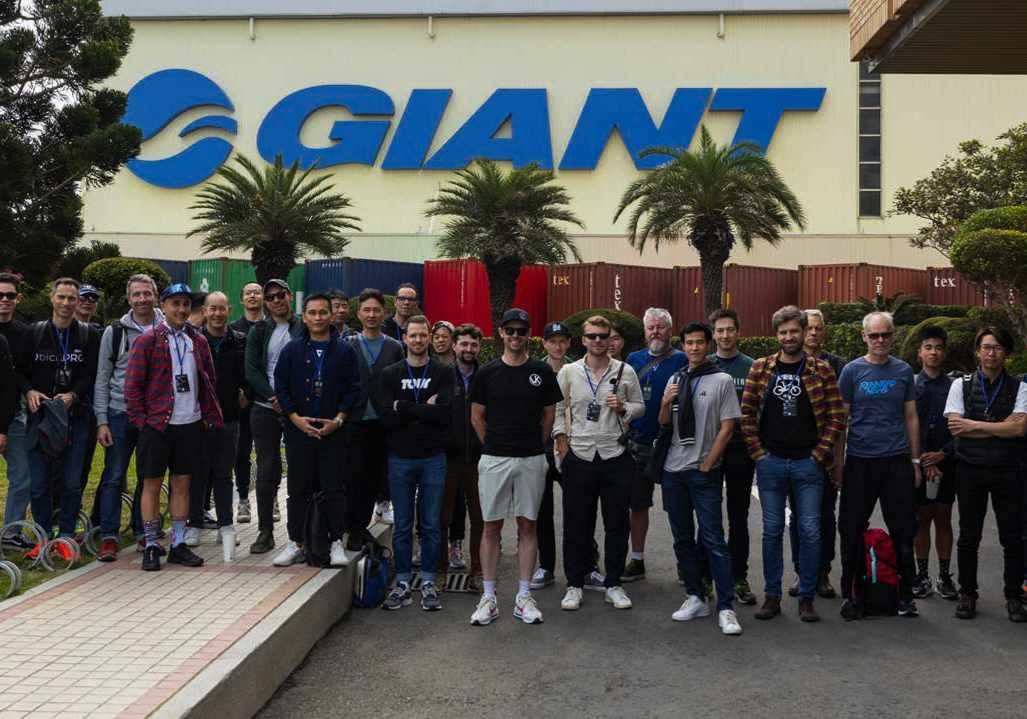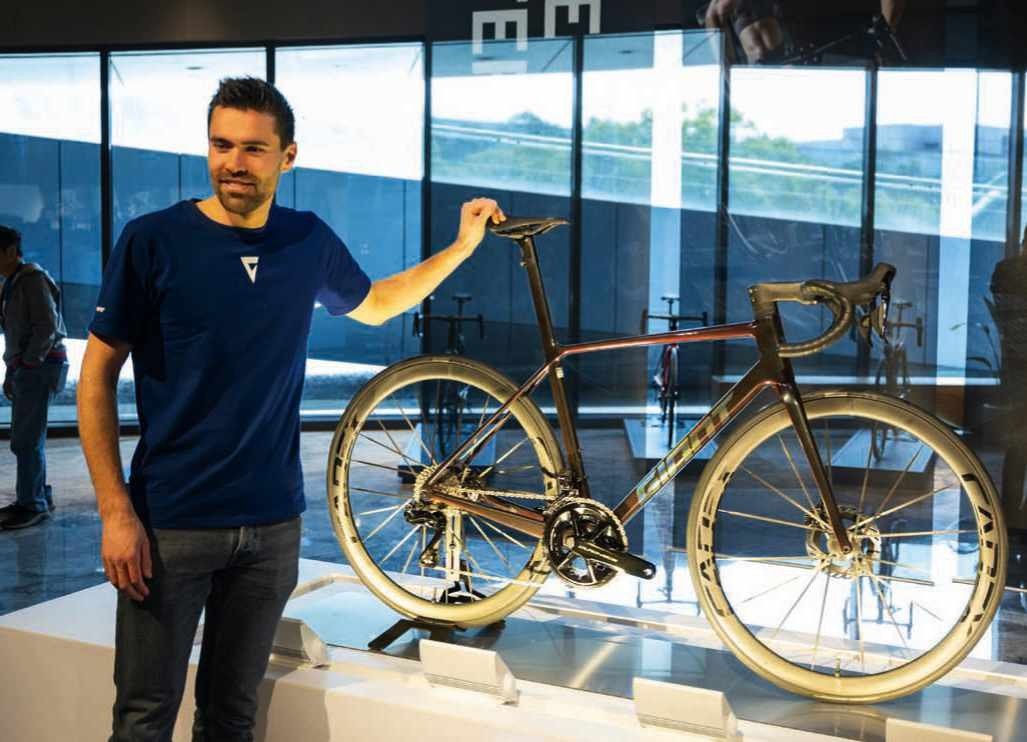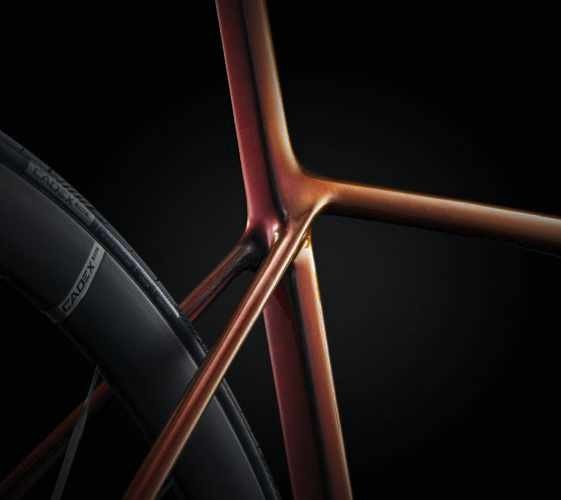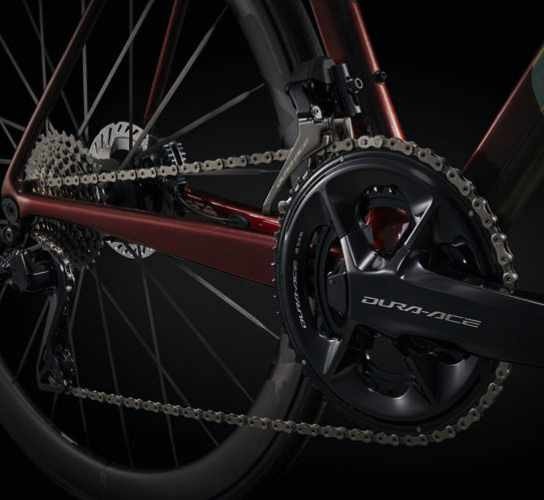GIANT TCR
Land of the Giants
Warren Rossiter heads to Taiwan to experience the launch of the new Giant TCR
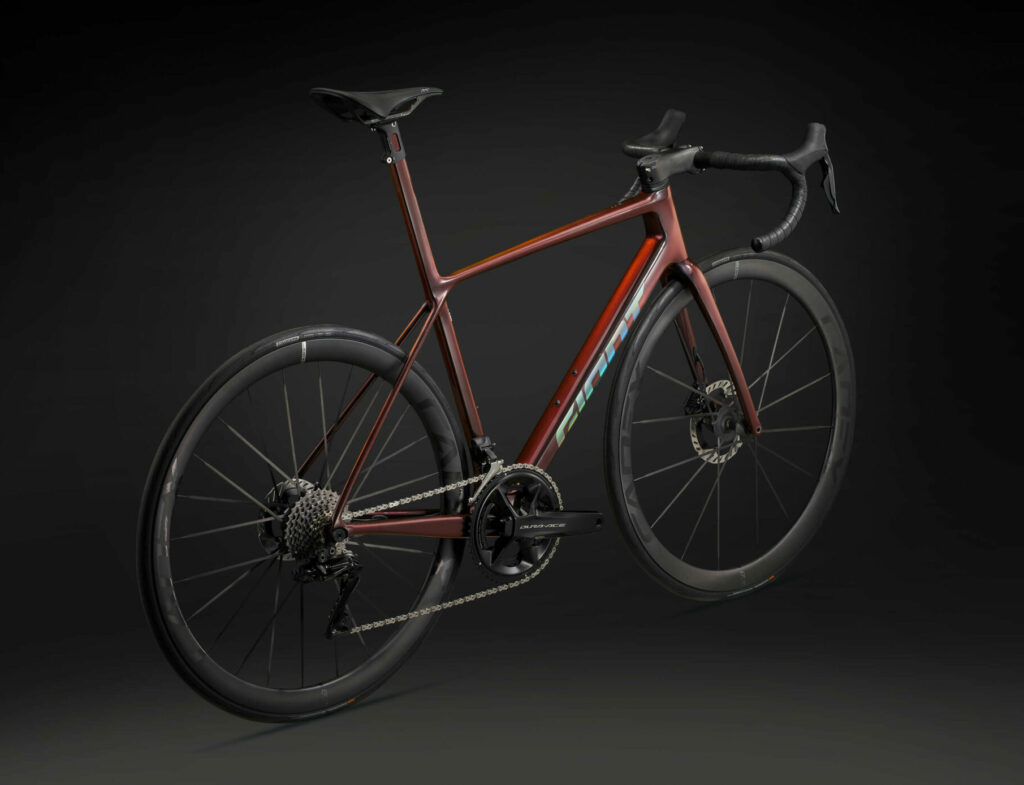
I’m quite excited because, for the first time in their 52-year history, Giant bicycles have opened the doors to their GTM (Giant Taiwan Manufacturing) facility in Tai Chung, Taiwan, to the press.
This is the place where this huge company build every one of their premium performance bikes across road, gravel and mountain biking, and hopefully I’m going to see where it all happens.
The occasion is the unveiling of Giant’s new 2024 TCR road bike, which has been designed, developed and manufactured here at the GTM. Launched in 1997, the TCR is arguably the single most important bike of the last 30 years and you could say it has influenced modern bike design more than any other model since its nineties debut.
The TCR was the brainchild of the legendary British bike designer and engineer, the late Mike Burrows. Until the TCR, Burrows was most famous for the radical Lotus Type 108, which Chris Boardman powered to 1992 Olympic gold and the hour record. The original aluminium TCR blazed a trail itself with its compact frame featuring a radically sloping top-tube, which left much of the bladed aero seatpost visible above it.
In 2000 the TCR gained a threadless headset – one of the unsung cycling heroes of the 21st century – that shed weight and added front-end stiffness. The next big leap was the TCR Composite, the first full-carbon TCR that debuted at the 2002 Tour de France, ONCE’s Joseba Beloki taking second behind a certain Lance Armstrong.
It’s since been ridden by pro teams such as Sunweb and elite riders including Mark Cavendish and Marianne Vos, with the rim-braked TCR winning our Bike of the Year in 2018. The newest models now inevitably feature disc brakes and electronic gearing – two of the biggest developments in recent decades – but what can we expect from 2024’s TCR Advanced SL? Let’s venture into the GTM and out onto the Taiwanese roads to find out…
Thread to tarmac
When it comes to modern carbon-fibre frame construction, most brands buy a standard woven carbon-fibre cloth that’s pre-impregnated with a resin. When heated, this solidifies to create a frame. Giant, however, have their own Advanced carbon fibre, buying raw threads from Japan – world leader in carbon-fibre raw-material production – then using their own looms to create woven material to their own specification. This allows Giant’s composite engineers to refine every piece of a frame to balance weight, stiffness, compliance and strength to a degree rarely found in mass-production bikes.
“Giant buy raw threads from Japan and create woven carbon-fibre material on looms to their own specification”
Giant introduced their own woven carbon in the last generation TCR, making the lightest set of pieces for any TCR carbon frame. For this update, Giant looked at every element of their hi-tech process to see where more improvements could be made.
Even with laser-cutting technology to make the individual pieces, Giant’s engineers found that they were still ‘overbuilding’ the TCR frame. Because a laser introduces heat, minuscule areas of the resin were activated, making the edges less than perfectly flat. This meant they needed carbon overlap to ensure optimal strength. The engineers knew that if they could improve these cuts, they could reduce the amount of overlap and the number of pieces needed to construct a frame.
This led to a new cutting method called ‘Cold Blade Cutting’, which has allowed Giant to reduce the number of pieces needed to create a TCR Advanced SL frame and fork from 380 to 270 pieces. Once the pieces are cut into shape, they’re stored in climate-controlled refrigerators within the facility before being hand-laid into moulds by technicians.
After moulding, a selection of frames from each production run are taken to Giant’s test labs to be stress tested on rigs that simulate 10,000km of use, including pedalling, road impacts, and impacts on every element of the frame and fork. Once the sample frames pass this stage, the other frames and forks are released for finishing. Every carbon fork Giant produce at the GTM facility goes through the X-ray test lab to check the internal structure is perfect too.
Giant TCR Advanced SL 0 DA
£11,999.99
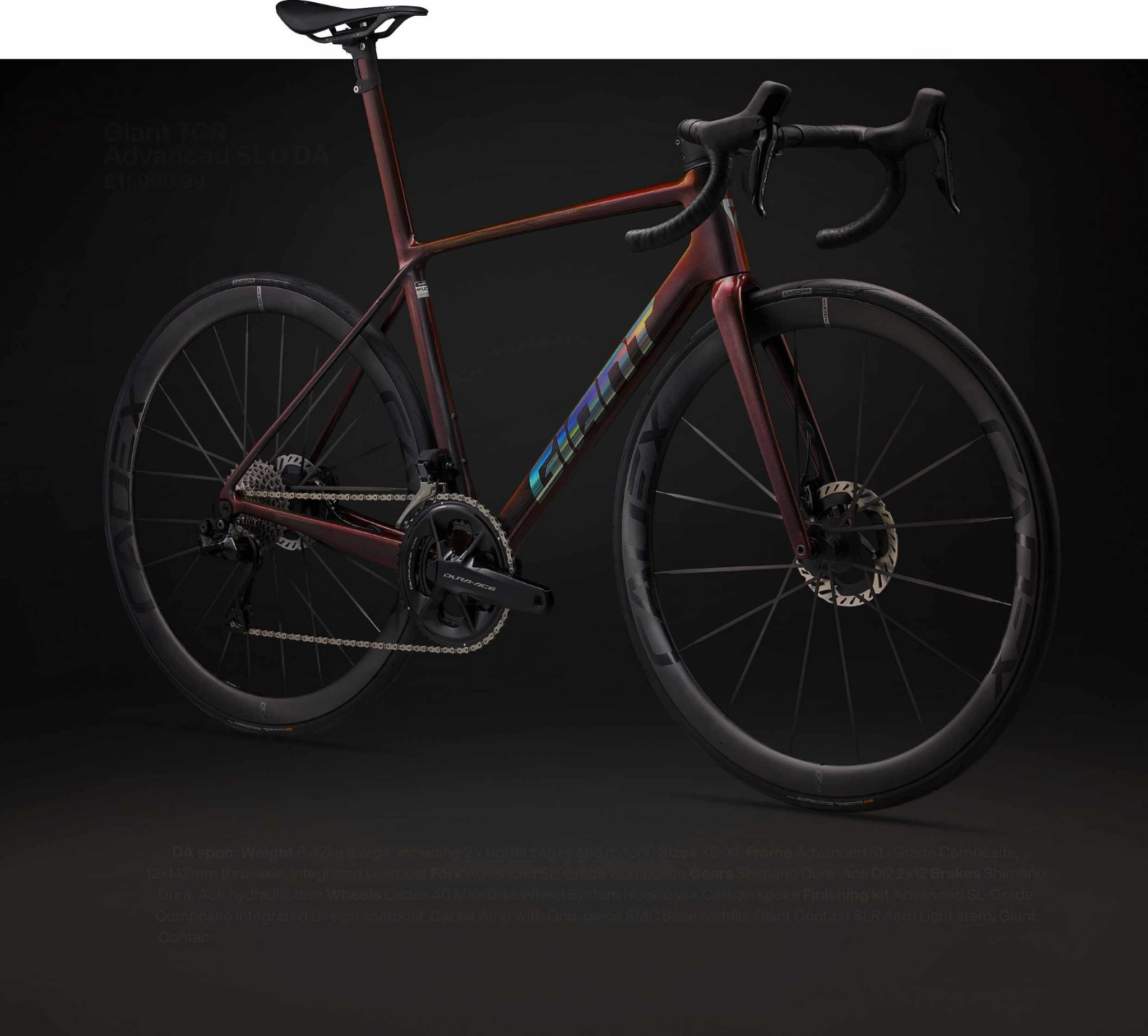
DA spec: Weight 6.42kg (Large, including 2 x bottle cages and mount) Sizes XS-XL Frame Advanced SL-Grade Composite, 12x142mm thru-axle, integrated seatpost Fork Advanced SL-Grade Composite Gears Shimano Dura-Ace Di2 2×12 Brakes Shimano Dura-Ace hydraulic disc Wheels Cadex 40 Max Disc Wheel System Hookless + Carbon spoke Finishing kit Advanced SL-Grade Composite Integrated Design seatpost, Cadex Amp with One-piece SMC Base saddle, Giant Contact SLR Aero Light stem, Giant Contact SLR, 10.5˚ flare bar, Cadex Race GC Tubeless 700x28mm effective 170 TPI, Folding tyres Extras FC-9200P Power Meter
Weight matters
On the outside, the frameset may look relatively unchanged, but there are some key differences to the latest TCR. To improve aerodynamics, Giant have reduced the frame’s surface area by 2%, with a reduction in the junction between the top- and seat-tubes. With no rim-brake version, the seatstay yoke has also shrunk. The fork gets a new profile that’s both lighter and reportedly more aero, and the down-tube has followed suit. The ISP (Integrated Seat Post) remains on the SL version, but is now a tapered D-shape rather than a bladed style.
The biggest visual change, however, is with the full cable integration at the front. The new front end has a D-shaped steerer, much like Giant’s aero road-racer Propel model, which allows the brake hoses to route through the bar and stem and down through the head-tube.
The result is a frame that weighs just 690g (size Medium; the previous-gen was 765g). Yes, Specialized’s S-Works Aethos is 585g, for example, but Giant say that this TCR has superior aerodynamics plus the frameset includes the seat mast. Add the weight of a seatpost to the Aethos frame (the current S-Works carbon post is 206g) and the TCR is just over 100g lighter.
System integration
The new TCR was also conceived of as a single system, rather than a frameset, wheels and components thrown together, and Giant worked in conjunction with leading component brand Cadex from day one.
The SL and Pro models of the TCR contain a D-shaped steerer called the Overdrive Aero used with a new Contact SLR/SL stem and matching bar. The bar has a stiffer and more aerodynamic design, with the top swapping the old D-shaped cross section for an egg-shaped one, which Giant says helps riders keep a more aero position while on the hoods. The bar is lighter, too, at just 160g (42cm).
“This TCR was conceived of as a single system, rather than a frameset, wheels and components all thrown together”
The new Cadex (or Giant Wheel System on the models below the SL 0) wheels’ rim shape was co-developed to work with the TCR frameset and Cadex claim an optimal balance of efficiency, control and aerodynamics. The wheel systems are tubeless ready and fitted with either Cadex or Giant 28mm tubeless tyres, while the redesigned fork, like the frame, has increased clearance for tyres up to 33mm. The Advanced SL 0 comes with the latest Cadex 40 Max, a flyweight 1,249g wheelset.
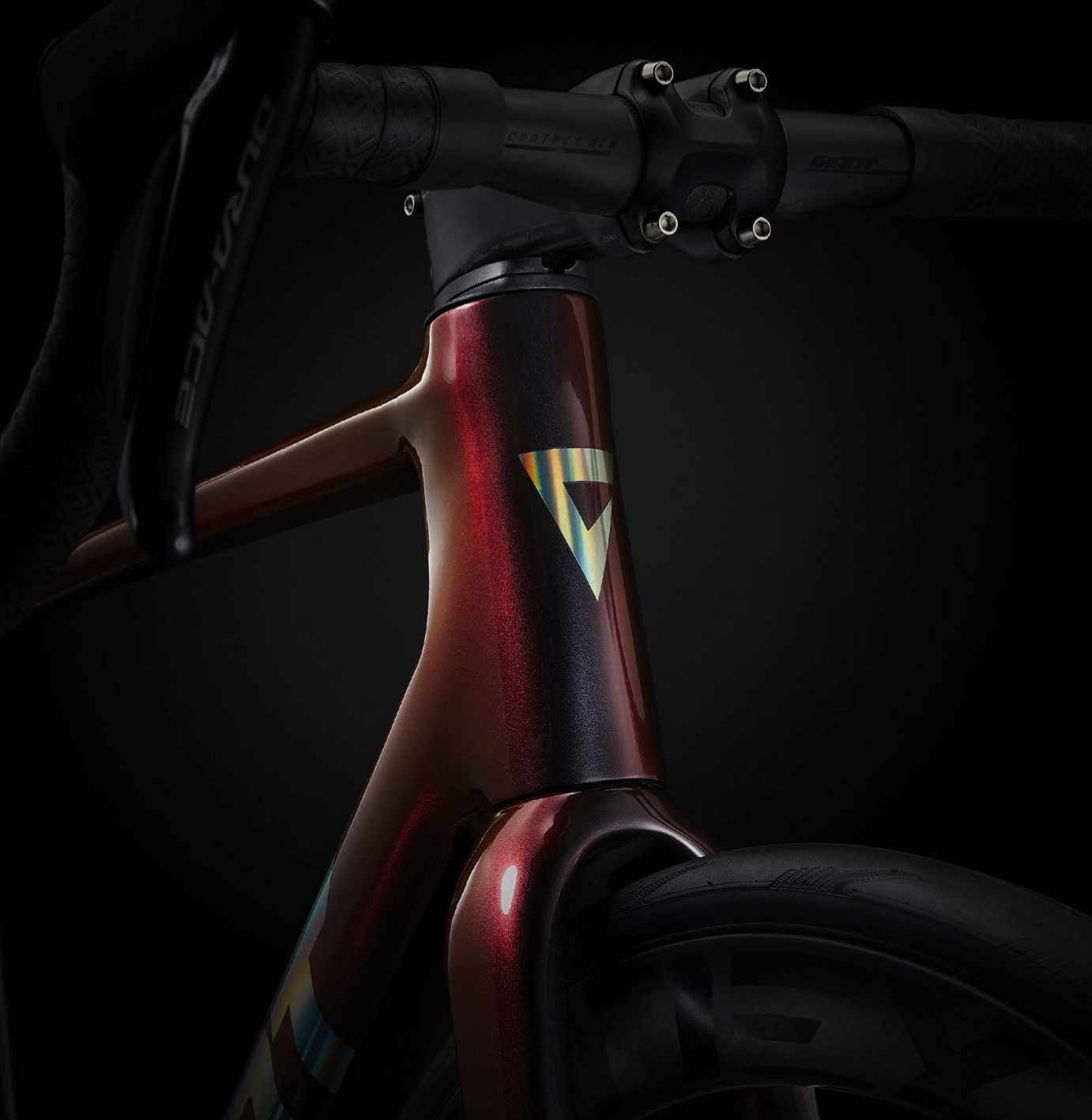
The new frameset’s design was informed by CFD (Computational Fluid Dynamics) and wind tunnel testing at the GST wind tunnel in Immenstaad, Germany, using a 24mph (40kph) wind speed and a dynamic mannequin. While most brands use a static mannequin, Giant claim their dynamic version more accurately reveals the aerodynamic effects of a rider while pedalling.
“Giant claim their dynamic mannequin more accurately reveals the aerodynamic effects of a rider while pedalling”
The truncated ellipse shapes in the frameset combined with the new co-developed cockpit and improved integration has given a net gain of 2.28 watts of aero advantage over the previous frameset. On the TCR Advanced SL 0, that figure rises to a 4.19-watt advantage over the equivalent previous model. Stiffness-to-weight ratio also sees a 3.38% improvement.
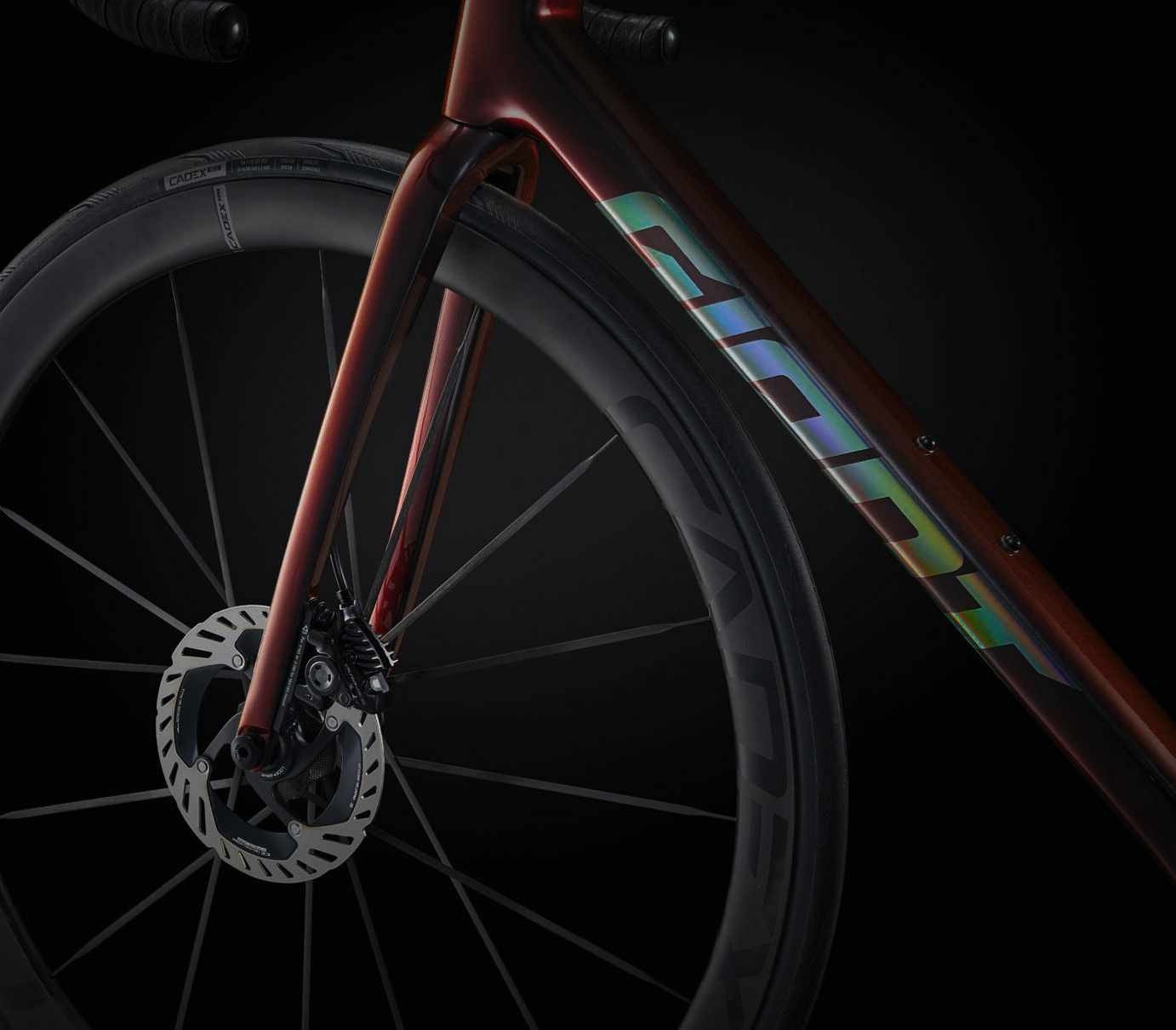
Absolute faith
I’m told all of this while being shown around the facility on launch day, while seeing how these amazing machines are put together. By the end, I’m itching to try a new TCR out for myself, and luckily I get to do just that over the next few days. Riding over Taiwan’s epic topography on the bike is a joy. As a long-term TCR owner, getting on board the new model feels very familiar, but also impressively light. My own eighth-gen TCR with a frankly ‘elite’ build – Red eTap, Zipp 202 NSW, Ceramic Speed upgrades throughout, a minimalist sub-100g saddle, lightweight bar and stem – tips the scales at just 7.18kg (size Large with pedals). This new bike weighed on the same scales comes in at 6.68kg, and I can definitely feel the difference when the road starts to rise. The new TCR climbs with a willingness and response that only comes from the lightest of bikes. It doesn’t, however, pay any penalty for the low weight. The frame and fork are taut and unwavering and the Cadex wheels are among the most responsive lightweight hoops I’ve ever ridden.
On my longest Taiwanese day out, the key sector of the ride is a 6km climb with an average gradient of 9%. The TCR flatters me. On the gruelling 6-8% gradients I’m able to hold a decent rhythm and good pace, and on the hard ramps that often get closer to 14-15%, the TCR feels rather punchier than I do. When getting out of the saddle, stomping on the pedals, pushing my own power and heart rate into the red, the bike simply ups the pace. It makes me feel more of a climber than any 6’2” inch tall, 92kg rider of a certain age ever should. Personally I’d prefer the more endurance gearing found on Giant’s Defy Advanced SL 0 rather than the 36/34 bottom gear here, but I do realise the TCR’s set-up is designed for lighter climbers.
That stiff climb is rewarded with an epic 8.5km descent. This encompasses everything from proper switchbacks to open hairpins right through to narrow roads with bamboo forming a canopy onto open straights where the potential for speed is epic. Inspection of my post-ride data shows that I’ve maxed out at 52.6mph/84.65kph on this descent. This surprises me as I haven’t set out to push the bike to that sort of speed. It helps that the bike felt totally planted. The handling is so intuitive that you simply flow from one corner to the next, hit the pedals on the straights and have absolute faith in the brilliant brakes when it comes to scrubbing speed.
In praise of the ISP
The wheels and tyres combine to add even more riding confidence. The new Cadex tyres impressed me, albeit I was riding on warm, bone-dry, smooth roads. The tyre profile has lower side walls than the previous Cadex rubber and the rolling surface comes further around the tyre profile. When you drop a shoulder and lean into a corner, the tread width and shape spread to give epic levels of grip. On exiting the corners, the lateral stiffness of the wheels makes them want to stand back up quickly, giving you bags of exit speed and acceleration when you start pedalling again.
Comfort wise on the lovely, smooth Taiwanese roads, the TCR felt like one of the best pure race bikes I’ve tried. It’ll be good to try one on our scarred sub-par UK tarmac though. Previous SL versions of the TCR have always impressed me with their vibration reduction at the rear (it’s a key reason I bought one). I know the integrated seatpost on the SL is divisive, and I understand the whole frame cutting/resale argument, even though you can get as much as 45mm of vertical adjustment with the ISP clamp. As for travelling worries, my TCR has been carted to Italy, Denmark and even Australia without a hitch, and its Large frame fits in my standard bike case.
The ISP design is, however, cleaner; the saddle/post will never slip, and Giant are able to engineer compliance here to make a lighter system and more aerodynamic shape. On a bike that’s aimed at being a no-compromise race machine, a standard post actually seems at odds with the design. You don’t see sliding seat adjusters in F1 cars…
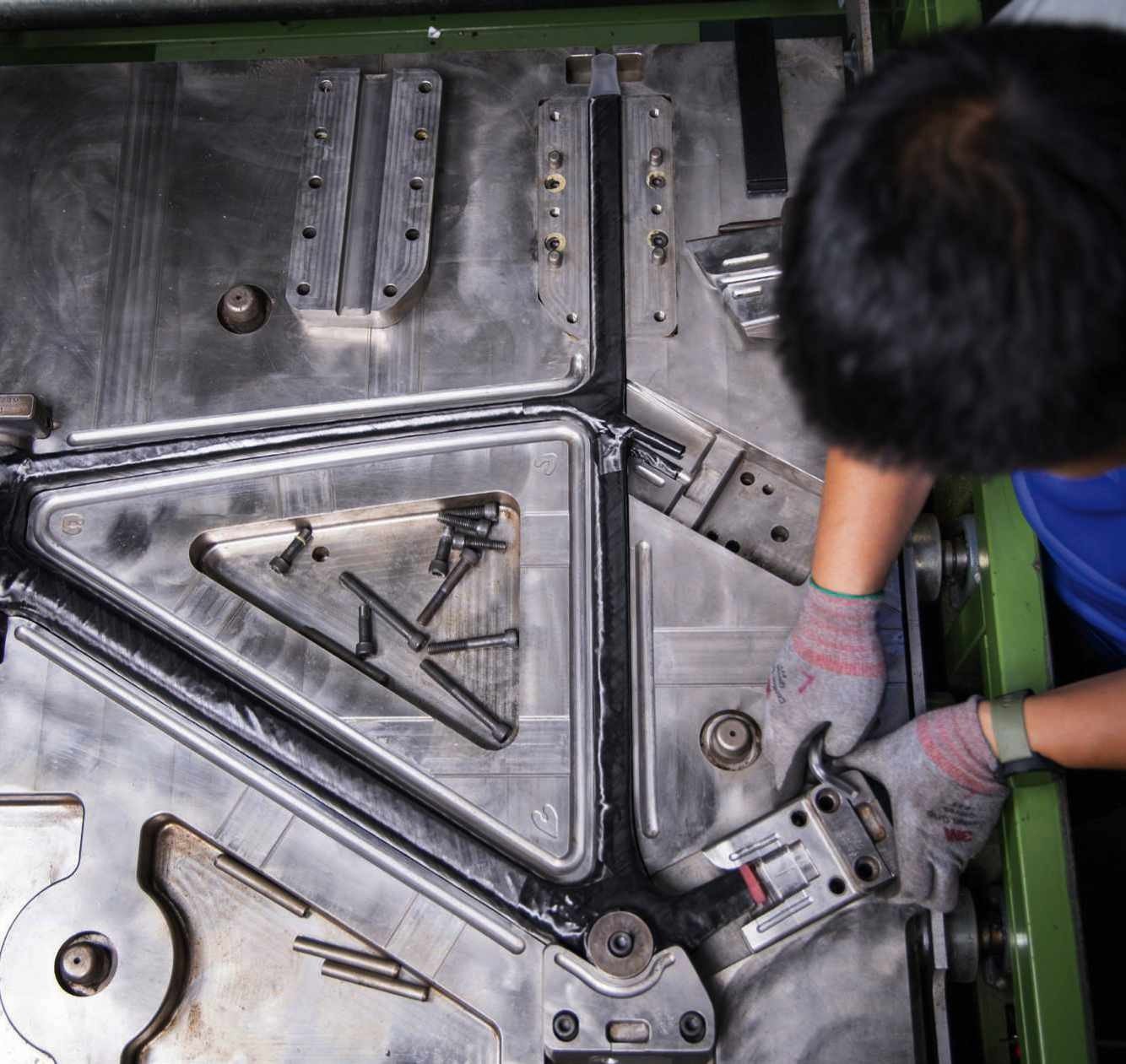
Complete racer
This new Advanced SL 0 is the finest edition of the ‘Total Compact Racing’ marque in Giant’s 28-year history of the bike. However, is it a significant improvement over the outgoing SL 0? I’d love to update my (eighth gen) 2020 TCR to the new bike, but the £11k pricing wouldn’t make that easy. If you had a 2021 SL 0 then the gains are there but they’re not huge. So, I’d only suggest an upgrade if you’re lucky enough to not have to worry about the price.
If you’re looking to buy a premium race machine of the money-no-object variety, then the TCR Advanced SL 0 should be at the top of your shopping list, alongside the S-Works Tarmac SL8 and Cannondale SuperSix Evo Hi-Mod. This Giant is lighter, sharper and smoother than before and it does feel like a complete bike rather than a fancy frame shod with lots of fancy parts. Total Compact Racing? Maybe. Totally Complete Racer? Definitely.
The 2024 TCR family
Three levels cover a range of budgets for those who like to go fast
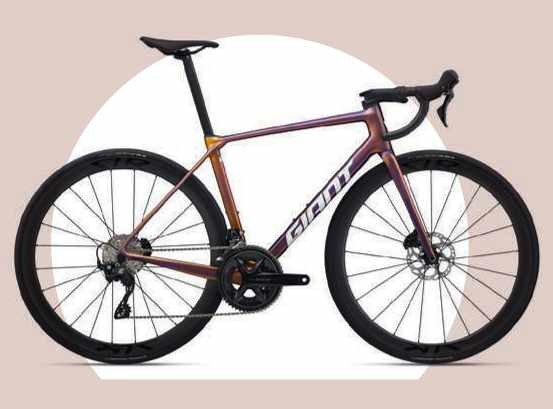
Giant TCR Advanced | £3,699-£3,799
The four-strong Advanced range sees Giant’s own wheels replace the Cadex offerings on the SL 0, but you still get a choice of Shimano 105 Di2 or SRAM Rival AXS 2×12 shifting.

Giant TCR Advanced Pro | £3,999-£6,699
Shifting moves up to Ultegra Di2 or SRAM Rival/Force AXS in the five-strong Pro range, with a power meter included. Giant’s Advanced Grade SL frame makes its debut in this range.
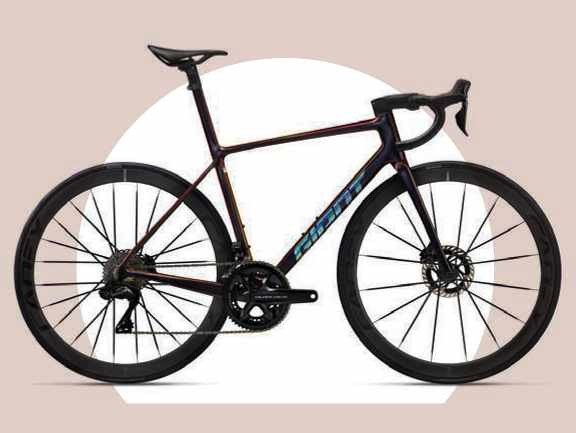
Giant TCR Advanced SL | £8,799-£11,999
The SL range has three models, with Dura-Ace Di2 on the top-of-the-range build. A choice of power meters, Cadex or Giant 40mm-deep wheels and an integrated seatpost adorn the SL Grade frame.
